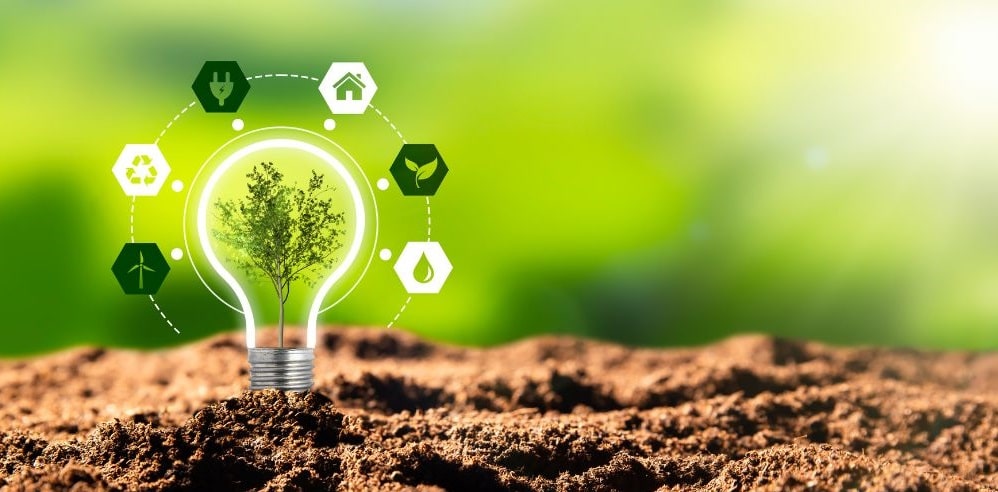Bamboo is becoming an increasingly popular choice as a renewable resource in today’s world of sustainability. It is the fastest-growing plant on Earth and has been utilized for centuries in various cultures for construction, food, medicine, and more.
As environmental concerns continue to grow, bamboo offers a promising solution with its vast potential that can be harnessed in countless ways. This article will explore why bamboo is considered a sustainable resource and what makes it such an attractive option for innovators looking to make environmentally conscious choices.
From its versatility to its durability and growth rate, we will delve into all aspects of this remarkable plant and how it could pave the way for a greener future. Whether you are interested in eco-friendly building materials or curious about the latest trends in renewable energy, read on to discover everything you need to know about bamboo as a renewable resource.
History And Cultural Significance Of Bamboo
Bamboo is a plant that has been around for thousands of years and has played an essential role in many cultures worldwide.
In China, bamboo was seen as a symbol of good luck and prosperity, while in Japan, it represented strength and resilience.
Bamboo’s versatility made it ideal for various purposes, from building materials to clothing.
Bamboo also had a significant impact on the art world. Artists used bamboo as inspiration for their works or incorporated it directly into their pieces.
The Chinese even developed a style called ‘bamboo painting,’ which focused solely on capturing the plant’s beauty in ink drawings.
Traditional bamboo crafts were prevalent too; baskets, furniture, hats, and musical instruments were just some examples.
Today, bamboo continues to influence contemporary design in architecture, fashion, and product development.
Its sustainability factor makes it an attractive alternative to traditional materials like wood and plastic.
With its rich history and cultural significance woven into society’s fabric globally, there is no denying that bamboo will continue to be an important resource well into the future.
Characteristics And Types Of Bamboo
Now that we understand the history and cultural significance of bamboo, let’s delve into its characteristics and types.
Bamboo is one of the fastest-growing plants in the world, making it a renewable resource that has many uses and benefits. It can be used for construction, furniture-making, paper production, clothing, and even as food.
There are over 1,500 species of bamboo known to man, with varying sizes and shapes. Some grow tall like trees while others form dense clumps on the forest floor. The most common types of bamboo used for commercial purposes are Moso Bamboo, Guadua Bamboo, Tonkin Cane Bamboo, and Black Bamboo.
Harvesting bamboo requires minimal maintenance as it doesn’t need replanting after harvest since it regenerates from its roots. However, harvesting must be done carefully to avoid damaging the plant or surrounding environment.
After harvesting, bamboo needs processing before being used commercially by cutting it into sections based on its intended use.
Bamboo’s versatility makes it an essential material in various industries worldwide due to its sustainability and eco-friendliness. As you’ve seen earlier in this article about the history and cultural significance of bamboo coupled with what we have discussed so far regarding its characteristics and types; understanding how best to harness these qualities will lead us down a path towards innovation in sustainable living practices without sacrificing quality craftsmanship or aesthetic beauty.
Sustainability And Environmental Benefits
As we continue to explore the benefits of bamboo, it’s important to note the sustainability and environmental advantages that come with using this renewable resource.

Bamboo is considered one of the most eco-friendly plants on earth due to its fast growth rate and ability to regenerate quickly after harvesting. This means that production practices can be maintained without depleting natural resources or harming the environment.
In addition, utilizing bamboo products has a significant impact on carbon footprint reduction. The plant absorbs more carbon dioxide than any other tree species, making it an effective tool in reducing greenhouse gases. This makes bamboo an ideal choice for those who are conscious about their environmental impact but still want to enjoy modern conveniences.
Eco-friendly practices such as sustainable farming methods and responsible manufacturing processes further enhance bamboo’s already impressive attributes.
As consumers become increasingly aware of their role in preserving our planet, choosing bamboo over traditional materials becomes a simple yet impactful decision towards creating a greener future. By embracing innovation and adopting environmentally friendly alternatives like bamboo, we can take another step forward towards building a better world for ourselves and generations to come.
Versatility In Industries And Applications
Bamboo’s versatility extends beyond its use in traditional everyday items. This renewable resource has made waves in fashion and construction industries, providing eco-conscious alternatives to conventional materials.
Bamboo fibers have been used to create sustainable clothing options due to their softness and durability. From socks to dresses, bamboo-based fabrics are breathable and moisture-wicking, making them ideal for active wear. Additionally, the plant grows quickly and requires minimal water, making it an environmentally friendly option for textile production.
In construction, bamboo is emerging as a viable alternative to steel and concrete due to its strength-to-weight ratio. Bamboo poles can be used for scaffolding or as reinforcement in structures such as bridges and buildings. Bamboo sustainability also makes it appealing as a building material since it regenerates faster than many other trees commonly used in construction.
The possibilities of this versatile material are endless, signaling a bright future ahead for innovation with bamboo.
Durability And Longevity
Durability and Longevity? Pfft, who needs that?! Let’s just build houses out of sticks and hope for the best! Okay, okay, I’m kidding. But there are certainly some misconceptions about bamboo as a construction material that we need to address.
First of all, let’s talk about the benefits and drawbacks of using bamboo for construction. On the plus side, it’s incredibly fast-growing and can be harvested sustainably without damaging ecosystems. It’s also strong and lightweight, making it an ideal choice for building structures like homes and bridges. However, it does have its limitations – it may not be suitable for use in areas with extreme weather conditions or high humidity levels.
So how does bamboo stack up against other renewable resources when it comes to durability? Well, compared to materials like timber or brick, bamboo is generally less durable over time. That being said, with proper treatment and maintenance, it can still last for many years.
And when you consider its other environmental benefits (such as carbon sequestration), it becomes clear why so many people are turning to this versatile plant as a sustainable alternative to traditional building materials.
In short: while bamboo might not be the most durable option out there, its many advantages make it a compelling choice for environmentally-conscious builders looking to innovate in their field. So don’t count out this humble grass just yet – who knows what kind of incredible structures we’ll be able to create with it in the future!
Challenges And Limitations Of Bamboo Use
Harvesting techniques pose a challenge for bamboo use, as it needs to be done in a sustainable manner.
Durability is a limitation, as bamboo isn’t as strong as wood and can’t be used in certain applications.
Cost-effectiveness is an issue too, as bamboo is usually more expensive than other materials.
There’s also the issue of harvesting bamboo in a way that doesn’t damage the environment.
Additionally, bamboo needs to be treated properly to make sure it can withstand the elements.
Finally, bamboo can be difficult to find in certain areas, limiting its availability.

Harvesting Techniques
Did you know that bamboo is one of the fastest-growing plants in the world? As a result, it has become an excellent renewable resource for many industries.
However, harvesting techniques can make or break its sustainability efforts. There are two methods of harvesting bamboo: mechanical and manual.
Mechanical harvesting involves using machines to cut down large amounts of bamboo quickly. It may seem like the most efficient way, but it poses several problems. The use of heavy machinery can damage soil structure and cause erosion, disrupting the ecosystem’s balance.
On the other hand, manual harvesting practices involve cutting individual stalks with machetes or saws carefully. This method ensures that only mature stems get harvested while leaving young ones intact to continue growing.
Sustainable harvesting practices must be adopted when working with bamboo if we want to preserve this valuable resource’s future availability. Manual harvesting allows sustainable management since selective cutting encourages new growth without damaging surrounding flora and fauna. Bamboo growers need to ensure they harvest at appropriate intervals while rotating their fields’ usage to avoid depleting resources from any given area permanently.
In conclusion, by adopting sustainable management approaches, we can promote bamboo as reliable source material for various products while conserving natural habitats simultaneously!
Durability
Now that we’ve talked about the importance of sustainable harvesting practices for bamboo, let’s move on to another challenge and limitation: durability.
While bamboo is known for its strength and flexibility, it can also be vulnerable to environmental factors such as moisture and sunlight.
The key to maximizing bamboo’s longevity lies in proper design possibilities and maintenance requirements.
Design possibilities are crucial when using bamboo in construction or product manufacturing.
For example, treating bamboo with preservatives like boron salt can increase its resistance to decay and insect damage.
Additionally, incorporating other materials like metal or plastic into designs can provide extra support where needed.
By thinking creatively about how best to use bamboo’s unique properties in conjunction with other materials, designers can create products that can withstand various pressures and last longer.
Maintenance requirements are equally important when it comes to ensuring the durability of bamboo products.
Regular cleaning and polishing keep surfaces free from dirt buildup, which could attract insects or cause rot over time.
When used outdoors, regular inspections should be done to check for signs of wear or damage caused by weather exposure.
Proper storage during off-seasons will prevent cracking or warping due to changes in temperature or humidity levels.
Innovation is all about finding creative solutions to challenges – whether they’re related to sustainability or durability!
With careful consideration given to design possibilities and maintenance requirements, there’s no limit to what we can achieve using this remarkable material.
Cost-Effectiveness
Now that we’ve tackled the challenge of durability, let’s talk about another limitation of using bamboo – cost-effectiveness.
While bamboo is a sustainable material with a readily available supply, it can still be expensive compared to other conventional materials. This poses issues for those seeking economic feasibility in their projects or products.
However, there are ways to address this challenge. One approach is to invest in high-quality bamboo products that have been properly treated and designed for longevity. Although they may come at a higher initial cost, they will ultimately save money in the long run by lasting longer and requiring less maintenance.
Another way to increase cost-effectiveness is by utilizing every part of the bamboo plant. For example, leftover scraps from construction or product manufacturing can be repurposed into items like kitchen utensils or even biofuel. By maximizing the use of each piece of bamboo, waste is minimized while also creating additional revenue streams.
The innovation lies not only in finding new ways to use bamboo but also in making it more economically viable as well. By balancing sustainability with affordability, we can continue to push boundaries on what’s possible with this incredible resource.
Future Potential Of Bamboo As A Renewable Resource
Now that we’ve explored the challenges and limitations of bamboo use, let’s take a look at the future potential of this renewable resource.
Despite its current limitations, there is no doubt that bamboo has enormous benefits as a crop for sustainable farming practices.
Bamboo farming can have a significant economic impact on local communities by creating jobs and providing a source of income. Additionally, because it grows quickly and requires minimal resources to cultivate, it can be an affordable alternative to traditional crops. This means that farmers in developing countries could benefit greatly from incorporating bamboo into their agricultural practices.
Furthermore, as technology advances, new possibilities for utilizing bamboo are being discovered every day. From construction materials to textiles to energy production, the applications for this versatile plant are endless.
As more research is conducted and innovative solutions are developed, we may find that bamboo becomes one of our most valuable natural resources in building a sustainable future.
Conclusion
In conclusion, bamboo is a remarkable renewable resource with a rich history and cultural significance. Its versatility in industries such as construction, furniture production, textile manufacturing, and even food cultivation makes it an invaluable material for sustainable development.
One interesting statistic to note is that some species of bamboo can grow up to 91 cm (35 inches) per day, making it one of the fastest-growing plants on Earth.
This rapid growth rate combined with its durability and strength makes bamboo an excellent alternative to traditional materials like wood and plastic.
As we continue to prioritize sustainability and environmental conservation, bamboo’s potential as a versatile and eco-friendly resource cannot be overlooked.





0 Comments